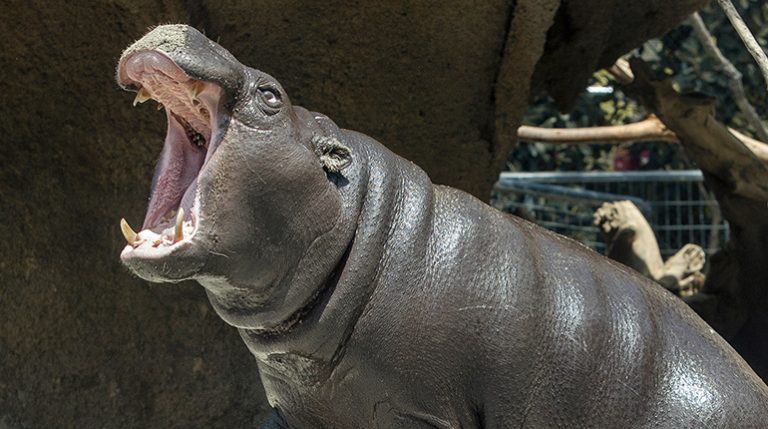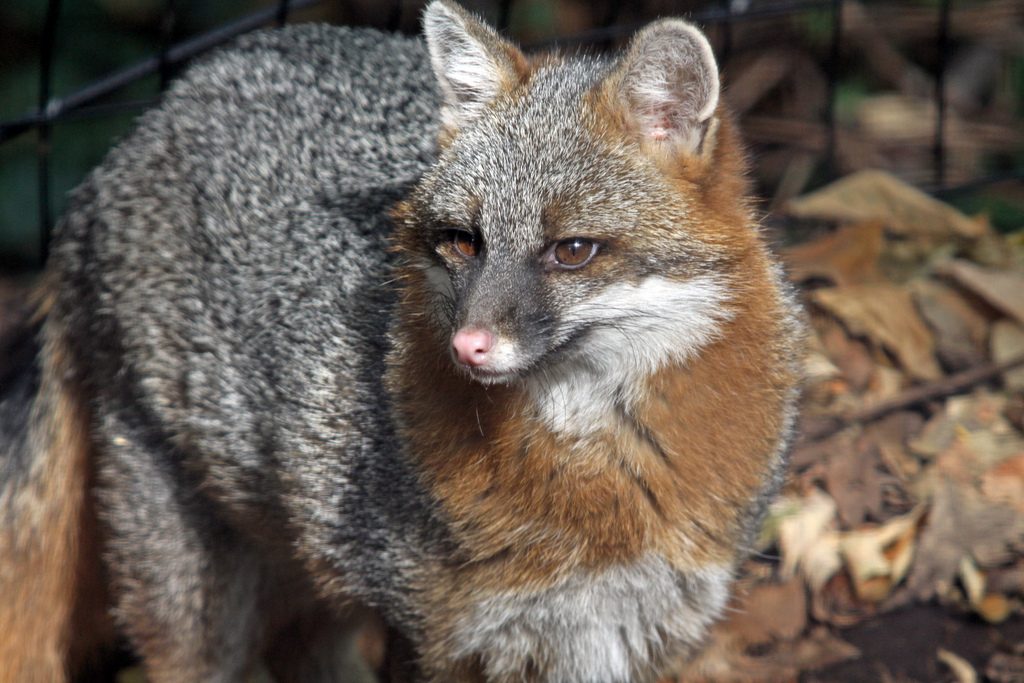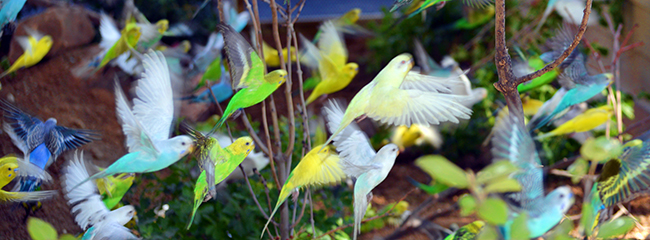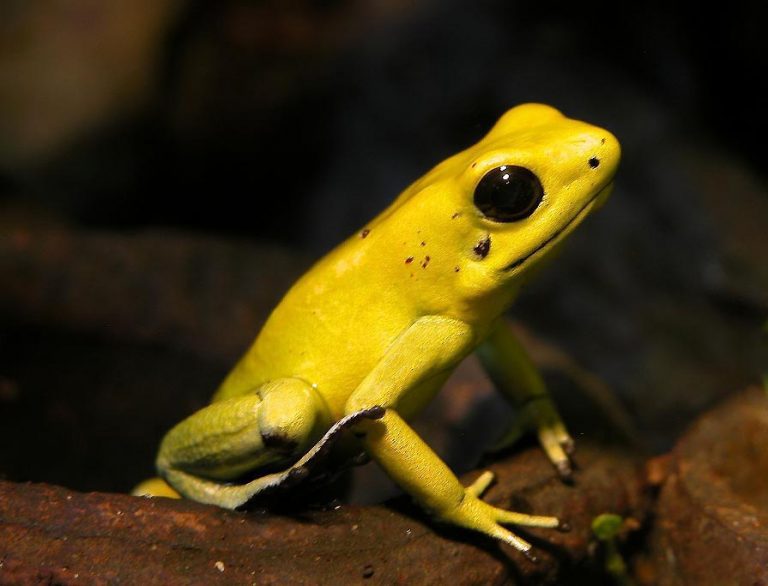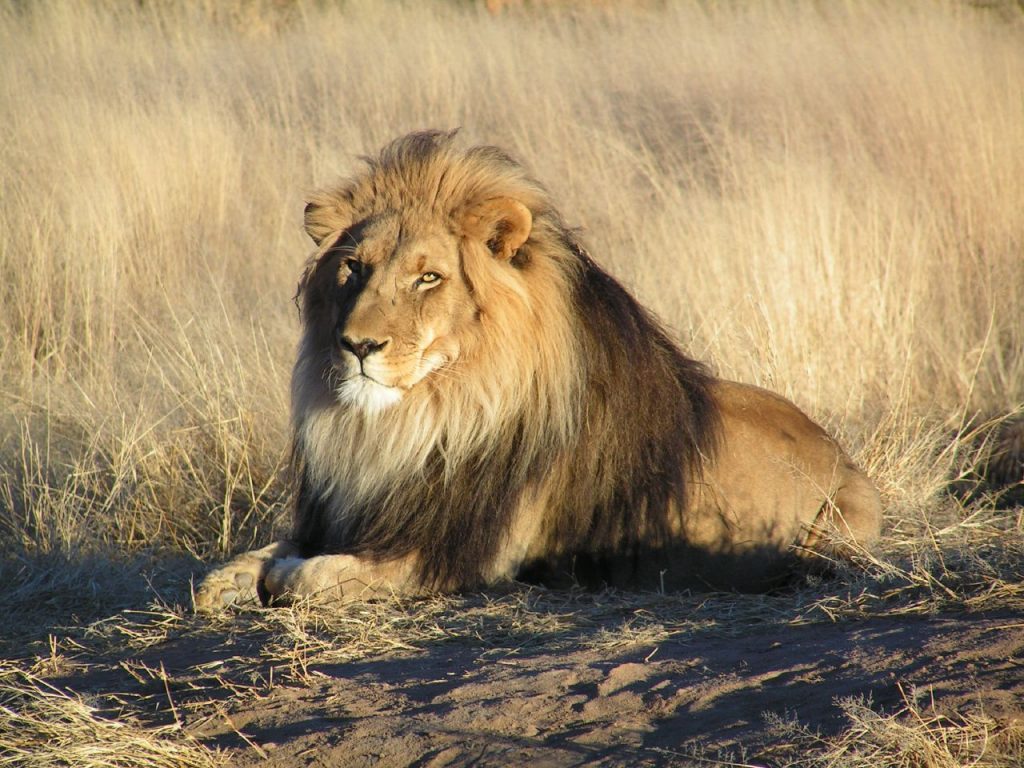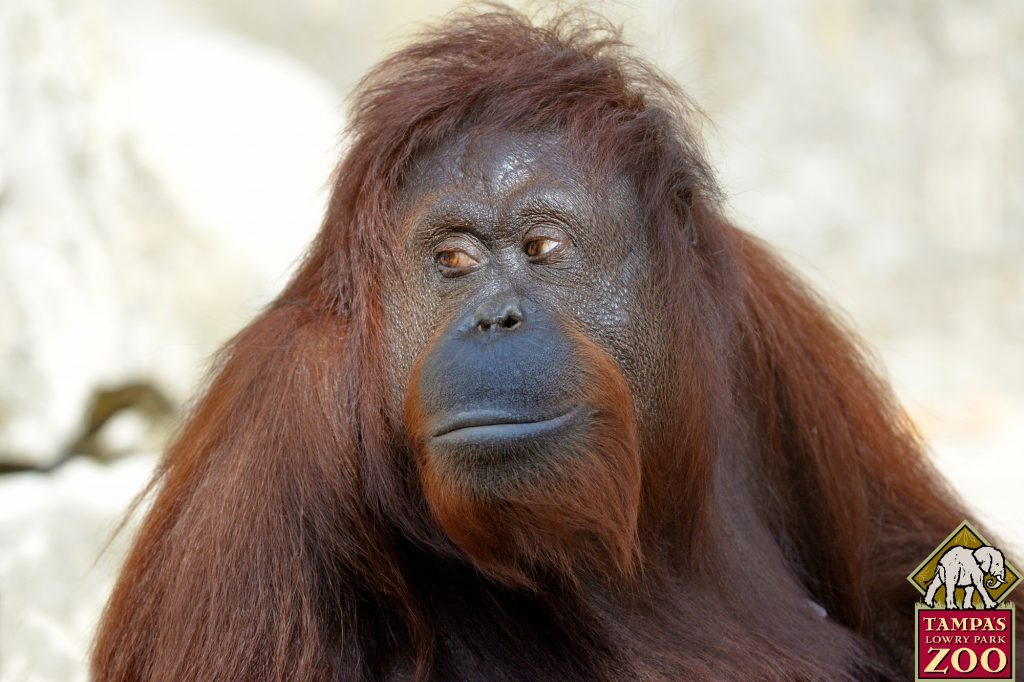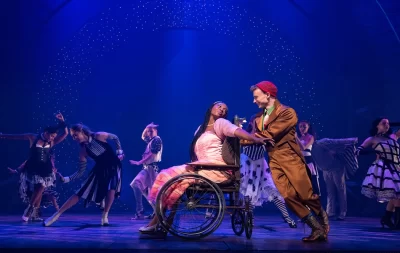Many students live in a world of brick and steel structures, of sprawling cities and busy streets. The natural world peeks through sporadically, providing a small oasis amid the cosmopolitan surroundings. Animals and the wilderness seem far away from their daily lives. But when the call of the wild…calls, there are places we can take students that are right in our own backyards: Zoos.
Walking through the gates of a zoo transports student groups to a different world, a place where creatures from every continent and ecosystem come together. In a zoo, the sounds of the city give way to the echoes of the jungle, the forest and the tundra. In the U.S., zoos are commonplace in most major metropolitan areas, and nearly every place you visit has a zoo somewhere close by.
If you’re looking for the best zoos in the U.S., this list will be your guide to help you plan your next student trip.
1. San Diego Zoo
Celebrating its 100th anniversary in 2016, the San Diego Zoo is considered one of the most distinguished zoos in the U.S. Located just north of downtown San Diego in Balboa Park, the San Diego Zoo boasts 100 acres and more than 3,500 rare and endangered animals representing more than 650 species and subspecies. It is also home to an impressive botanical collection with more than 700,000 exotic plants.
The zoo not only features a wide range of animals to see, but it also has a variety of tours and activities students can partake in to make the most of their visit. You can spend your time leisurely strolling from one zone to the next, discovering species from the Australian Outback to the Urban Jungle to the Asian Passage. Students can come face-to-face with a cheetah or clouded leopard in the Africa Rocks zone, or visit with Arctic fox and reindeer in the Northern Frontier zone.
For a more in-depth look at the animals and zoo operations, you can take your students on a 35-minute, guided bus tour through much of the zoo; or enjoy one of the animal encounter sessions where zookeepers share their tales of specific animals, and students can even pet or feed certain creatures. Inside Look Tours take visitors on a two-hour adventure that gives them special behind-the-scenes views of how the animals are cared for; while the Backstage Pass lets you get up close and personal with some of the zoo’s animal ambassadors and their trainers.
2. Brookfield Zoo
 Located just a few miles west of downtown Chicago, the Brookfield Zoo is said to be a zoo of firsts. Since opening its doors in 1934, the zoo has had many notable achievements, including Su-Lin, the first panda to be exhibited in the Northern Hemisphere; the first black rhino birth in captivity; the first okapi to be born in the U.S.; and the nation’s first inland dolphinarium, the Seven Seas Panorama.
Located just a few miles west of downtown Chicago, the Brookfield Zoo is said to be a zoo of firsts. Since opening its doors in 1934, the zoo has had many notable achievements, including Su-Lin, the first panda to be exhibited in the Northern Hemisphere; the first black rhino birth in captivity; the first okapi to be born in the U.S.; and the nation’s first inland dolphinarium, the Seven Seas Panorama.
The 216-acre Brookfield Zoo houses around 450 species of animals in a range of exhibits, including The Swamp, Fragile Rainforest and Pachyderm House. Visit the Living Coast to see fish, sharks and a colony of Humboldt penguins; or venture over to Habitat Africa! The Forest! to see giraffes and okapi.
Students can hop on board the open-air safari tram to get a narrated tour of the entire zoo. With a Backstage Adventure pass, student groups can work side-by-side with zookeepers as they care for the animals. No matter what animal your students favor, there’s a backstage adventure for them.
3. Columbus Zoo
Opened in 1927, the Columbus Zoo will be celebrating 90 years of operation in 2017. The zoo has many claims to fame, the first being Colo, the world’s first zoo-born gorilla. Another was the hiring of Jack Hanna as zoo director in 1978, who was given the title of Director Emeritus of the Zoo in 1992, a title he still holds to this day.
The zoo spans over 580 acres and houses more than 10,000 animals representing over 600 species. The zoo is separated into six different regions: Asia Quest, Australia and the Islands, Congo Expedition, Heart of Africa, North America and Polar Frontier, and Shores. Apart from the many great exhibits and animals to see, the Columbus Zoo offers a vast collection of attractions for students to enjoy. Camel and pony rides are available daily from early May until early October (age restrictions apply); the Columbus Zoo train gives guests a different way to explore the North America region; and live entertainment can be experienced with “Animals on Safari” and “Animal Encounters Village.” Jack’s Jungle Landing lets student groups touch and feed a stingray, enjoy interactive animal encounters and go on several rides.
There are some new features in 2016 that students can look forward to. The Shores Play Park is an ocean-themed playground located in the Shores region, complete with life-sized creature sculptures, water features and interactive games. The all new 4-D Theater seats 50 people and is also located in the Shores region. Guests will experience an 8-minute adventure combining thrilling sensory effects with high-definition 3-D imagery.
4. Houston Zoo
 Located within Hermann Park in Houston, the Houston Zoo is a 55-acre park that houses over 6,000 animals. Founded in 1922, the zoo has become a prized institution, drawing millions of visitors every year. The nearly 100-year-old establishment continues to evolve, bringing in new exhibits and expanding its offerings.
Located within Hermann Park in Houston, the Houston Zoo is a 55-acre park that houses over 6,000 animals. Founded in 1922, the zoo has become a prized institution, drawing millions of visitors every year. The nearly 100-year-old establishment continues to evolve, bringing in new exhibits and expanding its offerings.
Student groups can spend the morning exploring the African Forest and spotting gorillas, rhinos, giraffes and more; or observe predators in the Carnivores exhibit. During Houston’s humid summer months, visitors can head inside to Natural Encounters, where they can experience environments from all over the world: rainforests, deserts and even coral reefs.
Tours offer an exclusive behind-the-scenes look at the back-of-house animal areas, a meet-the-keeper experience and up-close encounters with the zoo’s prestigious animal ambassadors. Young students can spend some time riding the Texas Direct Auto Wildlife Carousel, which features armadillos as carousel figures—a claim no other zoo carousel can make. Another popular activity at the Houston Zoo is giraffe feeding. Guests can interact with the giraffe family by offering them a crunchy lettuce leaf.
5. Philadelphia Zoo
Like many landmarks in Philadelphia, the Philadelphia Zoo was the first zoo in the U.S. Located on the bank of the Schuylkill River in the city’s Centennial District, the zoo first opened in 1874, and the Victorian gates and gatehouses are the same as the day it opened. The 42-acre zoo is home to more than 1,300 animals, many of which are rare and endangered.
The zoo is extremely committed to animal science, care and management, and it has received recognition for its accomplishments, from the first orangutan and chimpanzee born in the U.S. in the 1920s to the first giant river otter born in the U.S. in 2004. The zoo features fascinating exhibits and educational programs, special public events and adopt-an-animal programs.
For an interactive experience, students can visit Lorikeet Encounter. They can feed beautiful lorikeets and lories with nectar in hand as they perch on their arms, shoulders and heads. A truly unique feature of the zoo is the animal exploration trail experience, known as Zoo360. It provides a network of mesh trails that allow animals to roam around and above zoo grounds. The Treetop Trail is meant for small primates, the Great Ape Trail accommodates much larger primates and the Big Cat Crossing is an overhead passageway that extends from First Niagara Big Cat Falls above the main visitor path.
6. Cincinnati Zoo
Opened in 1875, the Cincinnati Zoo & Botanical Garden is the second oldest zoo in the United States. From humble beginnings with just a handful of animals, the Cincinnati Zoo has grown to feature more than 500 animal and 3,000 plant species.
The zoo has an exhibit for everyone, no matter your favorite animal. Explore the Rhino Reserve, Cat Canyon, Gorilla World, Monkey Island, Wings of the World and so much more. If you’re visiting with younger students, be sure to check out the Children’s Zoo, which features a petting yard, animal nursery, playground and a variety of animals, including llamas and alpacas.
As you explore all the different exhibits, be sure to check out the iSaveSpecies stations which each offer an interactive activity that relates to the exhibits. At the Night Hunters exhibit, students can create a digital identification sign for small cat species, and at Manatee Springs they can take a quiz testing their conservation values and create a digital manatee conservation awareness poster that they can email to friends and family.
7. St. Louis Zoo
The St. Louis Zoo was first inspired by the World’s Fair of 1904, which showcased a walk-through flight cage, an extremely popular attraction that locals fought to keep in the city. In 1910, the Zoological Society of St. Louis was established, and the zoo found its place in Forest Park in 1913. The zoo gained much recognition and attention with the introduction of its Bear Pits in 1921, a moated exhibit that was only the second of its kind to be opened in the U.S. and became a model for other zoos.
The St. Louis Zoo sits on 90 acres of land and is home to more than 18,700 animals representing more than 560 species. It is admired for its diverse collection innovative approaches to animal management and conservation. It is also one of the few free zoos in the nation.
The zoo is organized into six different zones, highlighting various species and habitats. Check out bush dogs and anteaters at the River’s Edge, or see lions, jaguars and pumas in the Red Rocks zone. Become even more immersed in the zoo with a Safari Tour. Available daily from late May to mid-August, Safari Tours take students on a guided walk through the zoo, giving them insight into the animal world. For some thrilling and super fun entertainment, be sure to catch the First Bank Sea Lion Show, where the California sea lions perform acrobatic feats.
8. Indianapolis Zoo
First founded as a children’s zoo in 1964, the Indianapolis Zoo has grown into a 64-acre campus home to more than 1,600 animals and 23,000 plant specimens. Located in White River State Park, a short distance from downtown Indianapolis, the Indianapolis Zoo features five biomes—Oceans, Deserts, Plains, Forests and Encounters—all representing ecological groupings of animals and plants based on climate.
The Indianapolis Zoo has made great strides in recent years to expand and innovate, and it features many attractions that you cannot find at any other zoo. At the nation’s only underwater dolphin viewing dome, students can go 17 feet underwater to see these salt water creatures. At the Tiger Forest exhibit, students can get an inch and a half away from endangered Amur tigers. The Simon Skjodt International Orangutan Center is one of the most dynamic and innovative exhibits at the Indianapolis Zoo. It features eight endangered orangutans, offering them a special facility designed to meet their physical, social and intellectual needs.
To make a visit to the Indianapolis Zoo even more memorable, students can partake in special zoo experiences that will get them closer than they ever thought possible to the zoo’s amazing animals. Reserve an Animal Art Adventure ahead of your visit, and students get a chance to go behind the scenes, meet the zoo’s animal artists and go home with a painting created just for them. Or you can opt for a Dolphin In-Water Adventure, where students can get into the water with the dolphins and learn even more about these creatures.
9. Los Angeles Zoo
Opened in 1966, the Los Angeles Zoo and Botanical Gardens is home to more than 1,100 animals, representing more than 250 species, as well as over 800 different plant species. The 133-acre facility welcomes millions of visitors every year, offering them exciting exhibits and fun activities.
The Rainforest of the Americas is the latest installment in the zoo. The exhibit immerses visitors in the world of the rainforest, with educational graphics, detailed sculptures, and information on specific animals such as red uakari, cotton top tamarins and harpy eagles. Students can see some of the rarest species at The LAIR (Living Amphibians, Invertebrates and Reptiles). This exhibit houses over 60 different species, and each habitat is themed with hand-painted murals of the natural environments of these creatures. Other notable exhibits are the Elephants of Asia, the Chimpanzees of Mahale Mountains and Sea Life Cliffs, which is modeled after the California coast and is home to a group of harbor seals.
The Los Angeles Zoo offers a variety of shows and activities for students, including the Hippo Encounter Tour, giving them an up-close, behind-the-scenes chance to meet hippos. A new addition to the zoo is the presentations and keeper talks that will teach students a little more about some of the animals from the people who work with them on a daily basis. The World of Birds Show features performances from more than 20 bird species, including hawks, vultures and cranes.
10. Denver Zoo
The Denver Zoo got its start back in 1896 when an orphaned black bear was given to the then mayor of Denver, who, in turn, gave it to the keeper of City Park, where the zoo resides today. The zoo remained small until 1918, when the Bear Mountain exhibit opened, making it the first American zoo to use naturalistic enclosures rather than cages with bars. Now, the 80-acre zoo features many more of these natural exhibits for its residents.
If you’re visiting the Denver Zoo, be sure to check out Toyota Elephant Passage. The latest addition to the zoo, opened in 2012, features two miles of interconnected trails on 10 acres of terrain. It is one of the largest and most complex elephant habitats in the country, and allows the animals to rotate between five different habitats. Primate Panorama lets students immerse themselves in an intricate habitat for apes and monkeys of all sizes. The exhibit features open-air wire mesh tents that rise four stories up, allowing monkeys to play and climb to their hearts’ delight.
If you want your students to get up-close with the animals, there are a variety of Animal Adventures tours that will put them face-to-face with some of their favorite creatures, allow them to meet with zookeepers, and take a guided tour of the zoo and specific exhibits. There are many options for student groups to choose from, and there’s something for everyone, no matter their favorite animal. The Denver Zoo also hosts many shows and feedings, including the Sea Lion Show at Northern Shores, Elephant Passage Demonstration and Africa’s Greatest Predators.
11. Dallas Zoo
From humble beginnings in 1888 with just four animals, the Dallas Zoo has grown into one of the largest zoos in the U.S. The facility is now home to more than 2,000 animals, and continues to expand with new exhibits and exciting entertainment for guests.
The Dallas Zoo features some unique exhibits and inhabitants that cannot be seen at other zoos. The Giants of the Savanna is the only multi-species zoo exhibit in the U.S. to mix elephants and other species in the same habitat. The Dallas Zoo is also the only zoo in Texas and one of 10 zoos in the nation to feature koalas. Young students will love the Lacerte Family Children’s Zoo, featuring interactive exhibits and fun activities for kids and adults.
To get a different view of the zoo, take a ride on the Wilds of Africa Adventure Safari Monorail. This offers students a birds-eye view of African habitats not accessible by foot, taking them past Chimpanzee Forest, crocodile pond and Penguin Cove, among others. For more entertainment, check out Wonder of the Wild, a 20-minute wildlife show featuring animals from all over the world; or experience Cheetah Encounter, where the zoo’s popular cheetah and his Labrador retriever friend, showcase their speed and agility in a 75-yard-long exhibit. In 2017, a new exhibit will join the collection at the Dallas Zoo. The Simmons Hippo Outpost is an immersive waterhole habitat that will include a large underwater viewing area. When it opens next year, the zoo will be home for Nile hippos for the first time in 15 years.
12. Central Park Zoo
 Despite being one of the smaller zoos in the U.S., the Central Park Zoo is still a popular place to visit, especially for guests of Central Park and New York City. The 6.5-acre zoo is part of a system of four other zoos and the New York Aquarium. It began as a menagerie in the 1860s, was modified in 1934 to add new buildings and was renovated once again in the 1980s, with naturalistic environments replacing the old cages.
Despite being one of the smaller zoos in the U.S., the Central Park Zoo is still a popular place to visit, especially for guests of Central Park and New York City. The 6.5-acre zoo is part of a system of four other zoos and the New York Aquarium. It began as a menagerie in the 1860s, was modified in 1934 to add new buildings and was renovated once again in the 1980s, with naturalistic environments replacing the old cages.
The zoo is easy to navigate due to its size and distinct exhibit areas. The first attraction to note is the Delacorte Clock tower at the north side of the zoo. The clock plays seasonal chimes and nursery rhymes on the half hour, and it is surrounded by whimsical animals. From there, students can walk over to the Tropic Zone to see birds, bats and snakes, and then make their way to the Temperate Territory, which houses the red pandas and the ever-popular snow leopards. Next stop is the Grizzly Bears, followed by the harbor seals, penguins and sea birds.
Take some time to visit the 4-D Theater, an immersive experience that combines the visuals of 3-D with a variety of sensory effects. Students can also see daily penguin and sea lion feedings, and zookeepers are always available to answer questions.
13. National Zoo
Part of the Smithsonian Institution, the National Zoological Park is a 163-acre zoo in the heart of Washington, D.C. Founded in 1889, it houses 2,000 animals of nearly 400 different species. It’s most famous for its giant pandas – Tian Tian, Mei Xiang and Bao Bao. The zoo is also home to big cats, great apes, amphibians and small mammals.
Students will lose themselves in the tropical rainforests of Amazonia, an exhibit where they get a look at the vibrant underwater life of the Amazon River. Then they can head over to Asia Trail to see the giant pandas, as well as sloth bears, clouded leopards and Asian small-clawed otters. Wander through the landscaped paths of American Trail, where they can explore the animal gems of North America. Take the young students over to Kids’ Farm, home to various farm animals and designed to give kids an interactive learning experience.
Two-hour guided walking tours, available on weekends, are one of the best ways to see the zoo in a limited amount of time. The tour takes students to see some of the most interesting animals at the zoo, shows how the zoo cares for the animals, and provides a trained guide to answer any and all questions. Also, be sure to check the events calendar, as the zoo has a lot going on to celebrate wildlife cultures and zoo science, providing hands-on learning opportunities for students. Another bonus to visiting the National Zoo—it’s free!
14. Lowry Park Zoo
Located in Tampa, Florida, Lowry Park Zoo is one of the most popular zoos in the Southeast. Opened in the 1930s, the zoo gradually grew over the next few decades, but didn’t really take off until the 1980s. The Lowry Zoo features more than 1,000 animals on nearly 60 acres of land.
If you want to teach your students about the local inhabitants of the state, there’s the Florida Wildlife exhibit that showcases the wide variety of animals that can be found in Florida. This exhibit includes the Manatee and Aquatic Center, dedicated to the critical care for injured, sick and orphaned wild manatees. Students can also take a trip to the world down under at Wallaroo Station, an Australia-themed family area that features an interactive petting zoo, a water play area and a range of animals native to that region of the world.
Lowry Park Zoo offers a number of different interactive activities for students, including a walk with the wallabies, giraffe feedings and stingray encounters. Student groups can also take part in one of the zoo’s daily premium experiences that take them on a behind-the-scenes journey to get up-close with wild animals. The itineraries change daily, but no matter what experience you have or animal you interact with, the zoo promises a one-of-a-kind moment. You can also take a private tour that offers a unique look at how the facility operates.
Zoos offer students a great escape to a world outside the norm, exposing them to creatures they would probably never get the chance to see. Each of these U.S. zoos delivers something dynamic, and no matter which one you choose to visit for your field trip, students are sure to experience a memorable day in the wild.


